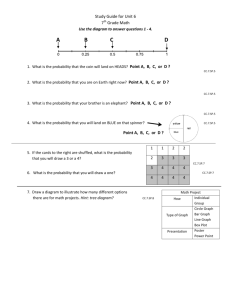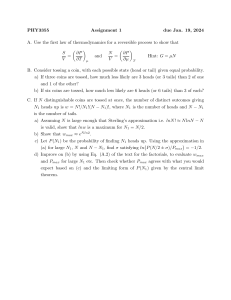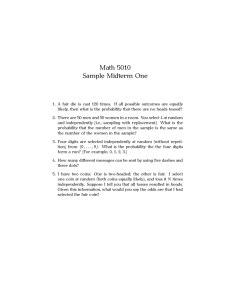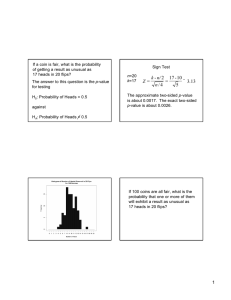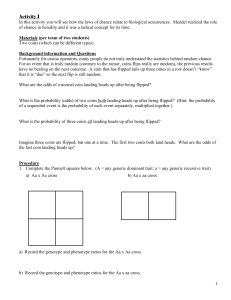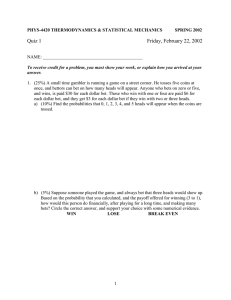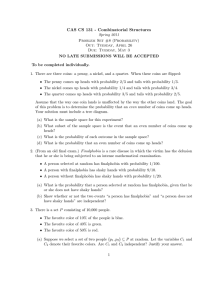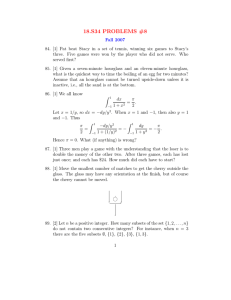CAS CS 131 - Combinatorial Structures
advertisement
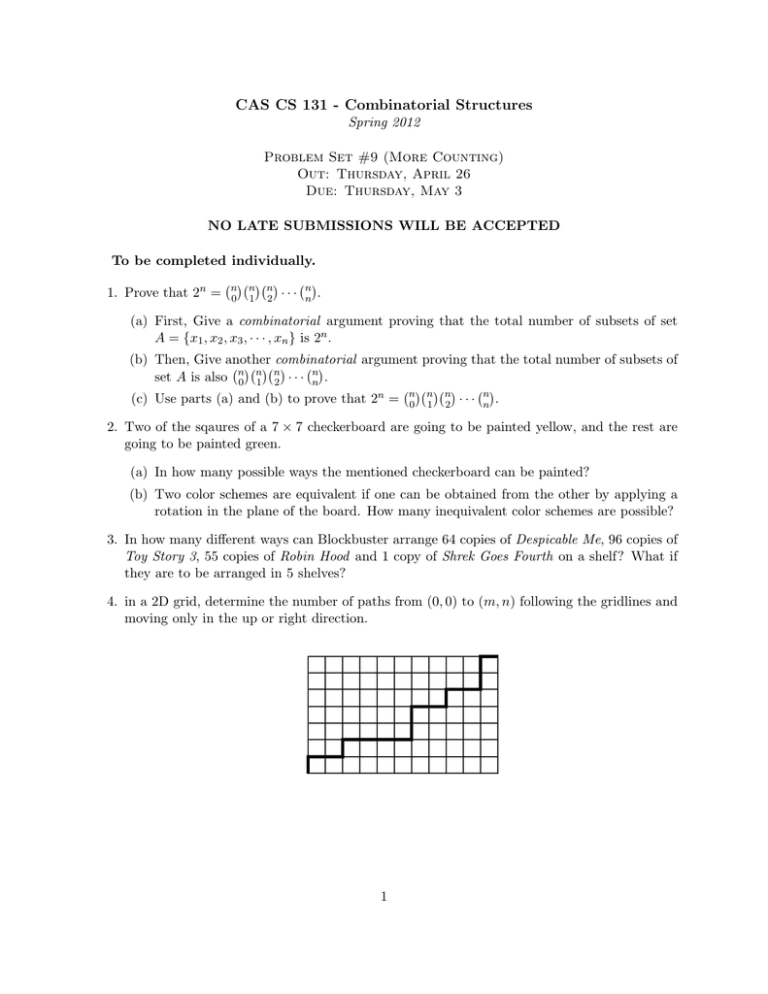
CAS CS 131 - Combinatorial Structures
Spring 2012
Problem Set #9 (More Counting)
Out: Thursday, April 26
Due: Thursday, May 3
NO LATE SUBMISSIONS WILL BE ACCEPTED
To be completed individually.
1. Prove that 2n =
n n n
n
0 1 2 ··· n .
(a) First, Give a combinatorial argument proving that the total number of subsets of set
A = {x1 , x2 , x3 , · · · , xn } is 2n .
(b) Then, Give another
combinatorial
argument proving that the total number of subsets of
set A is also n0 n1 n2 · · · nn .
(c) Use parts (a) and (b) to prove that 2n =
n n n
n
0 1 2 ··· n .
2. Two of the sqaures of a 7 × 7 checkerboard are going to be painted yellow, and the rest are
going to be painted green.
(a) In how many possible ways the mentioned checkerboard can be painted?
(b) Two color schemes are equivalent if one can be obtained from the other by applying a
rotation in the plane of the board. How many inequivalent color schemes are possible?
3. In how many different ways can Blockbuster arrange 64 copies of Despicable Me, 96 copies of
Toy Story 3, 55 copies of Robin Hood and 1 copy of Shrek Goes Fourth on a shelf? What if
they are to be arranged in 5 shelves?
4. in a 2D grid, determine the number of paths from (0, 0) to (m, n) following the gridlines and
moving only in the up or right direction.
1
5. A jar contains 100 marbles, identical except that 30 are red, 20 black, 5 green and the rest w
hite. If a marble is taken from the jar at random, w hat is the probability that the marble is:
(a) red ?
(b) black or green?
(c) not red?
(d) multicolor?
6. There are three coins: a penny, a nickel, and a quarter. When these coins are flipped:
• The penny comes up heads with probability 2/3 and tails with probability 1/3.
• The nickel comes up heads with probability 1/4 and tails with probability 3/4.
• The quarter comes up heads with probability 3/5 and tails with probability 2/5.
Assume that the way one coin lands is unaffected by the way the other coins land. The goal
of this problem is to determine the probability that an even number of coins come up heads.
Your solution must include a tree diagram.
(a) What is the sample space for this experiment?
(b) What subset of the sample space is the event that an even number of coins come up
heads?
(c) What is the probability of each outcome in the sample space?
(d) What is the probability that an even number of coins come up heads?
2
